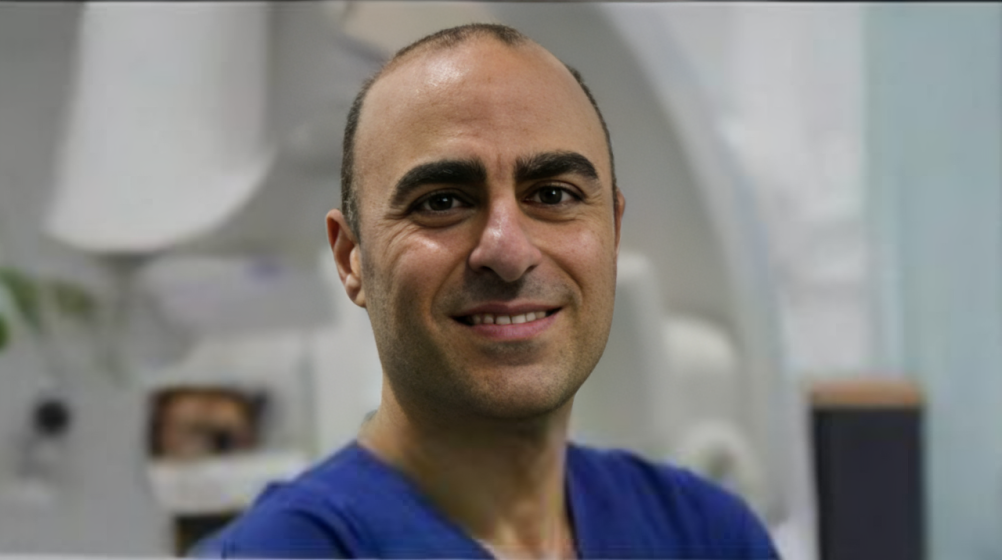
George Touma Highlights DCB-BIF Trial: Drug-Coated Balloons Improve Outcomes in Coronary Bifurcation PCI
George Touma, Interventional Cardiologist at St George Private Cardiology, posted on LinkedIn:
” What is the DCB-BIF Trial?
The DCB-BIF (Drug-Coated Balloon in Bifurcations) trial is the first well powered, multicenter randomized study comparing drug-coated balloon (DCB) angioplasty versus conventional non-compliant balloon (NCB) angioplasty for the side branch (SB) in patients with true but “simple” coronary bifurcation lesions treated using a provisional stenting strategy.
Conducted across 22 centers in China, Indonesia, Italy, and Korea, it enrolled 784 patients.
Study Design and Patients
• Included patients with true bifurcations (Medina 1,1,1; 0,1,1; or 1,0,1) and SB ostial stenosis ≥70% after main vessel (MV) stenting and proximal optimization (POT).
• Randomized 1:1 into two groups:
– DCB arm – SB treated with a paclitaxel-coated balloon
– NCB arm – SB treated with a standard non-compliant balloon
• Primary endpoint: 1-year MACE (cardiac death, target-vessel MI, clinically driven TLR).
• Patients: median age 65 years, 23% women.
Key Findings
MACE at 1 year:
• 7.2% in the DCB group
• 12.5% in the NCB group
Benefit driven by lower target-vessel MI.
Rates of cardiac death, TLR, procedural success, two-stent crossover, all-cause death, and stent thrombosis were similar.
Interpretation and Significance
• DCB for SB angioplasty improves outcomes compared to conventional ballooning in this scenario.
• As the first large RCT powered for clinical outcomes, DCB-BIF provides evidence for incorporating DCBs into bifurcation PCI strategies.
Broader Context and Research
• Before DCB-BIF: evidence was limited to small RCTs and meta-analyses focused on angiographic outcomes like late lumen loss (LLL). These suggested better SB patency and possible MI reduction, but lacked power.
• Meta-analysis of 5 RCTs (~1,255 patients): DCBs reduced MI risk (RR = 0.56; p=0.01), though no significant differences in overall MACE, TLR, or mortality.
The Five RCTs used in this meta analysis:
1. Herrador et al., 2013 (Spain) – Non-randomized (NRCT) study using SeQuent Please paclitaxel-eluting balloon.
2. Zong et al., 2018 (China) – RCT, SeQuent Please paclitaxel-eluting balloon.
3. Zhang et al., 2019 (China) – NRCT, SeQuent Please paclitaxel-eluting balloon.
4. Jing et al., 2020 (China) – RCT, Bingo paclitaxel-eluting balloon.
5. Bu et al., 2021 (China) – RCT, DCB (unspecified brand).
• PEPCAD-BIF trial (~64 patients): showed less late lumen loss with DCB vs plain balloons.
• Ongoing trials (e.g., OCVC-BIF) are testing additional DCB use after kissing balloon inflation versus standard approaches, aiming to refine bifurcation PCI strategies.
Take-Home Message
The DCB-BIF trial establishes DCB angioplasty as a clinically superior side-branch strategy in provisional bifurcation PCI – delivering fewer MIs. Its my default strategy.”
Stay updated with Hemostasis Today.
-
Nov 4, 2025, 09:26Courtney Lawrence: One of Our Most Popular American Red Cross SUCCESS Talks is Just Around the Corner!
-
Nov 4, 2025, 09:21New Study by Emmanuel J Favaloro and Team Questions Consistency in APS Classification and Diagnosis
-
Nov 4, 2025, 09:20Yazan Abou Ismail to Present Insights on AI Models in TTP at 67th ASH Annual Meeting
-
Nov 4, 2025, 09:17David Calvet Canut on Takeda's HyHub: A Shift Toward Patient-Centered Biologics
-
Nov 4, 2025, 09:16Samantha Nelson Encourages You to Share Your Experience on World Thrombosis Day
-
Nov 4, 2025, 08:57Toluwalase Awoyemi: Digital Health Meets Maternal Heart Care
-
Nov 4, 2025, 08:53Rebecca Ahrens Nicklas Shares FDA Interactions on Interventional Genetics with The Rare Disease Community
-
Nov 3, 2025, 09:13Claudio Carrubba on How Timing Truly Matters in Trauma Embolization
-
Nov 3, 2025, 08:57Multiplex Apolipoprotein Panel Boosts Cardiovascular Risk Prediction and Precision Therapy
-
Nov 3, 2025, 08:46Rachel Lamerton and Colleagues on Activation of Platelets in Flow Cytometry
-
Nov 4, 2025, 09:10OCCUPI Trial Analysis Highlights Benefits of OCT Guidance in ACS Patients
-
Oct 29, 2025, 07:31The Use of Artificial Intelligence to Improve Detection of Acute Incidental Pulmonary Emboli - JTH
-
Oct 29, 2025, 07:05Shrinidhi Nathany: AI in Diagnostic Medicine
-
Oct 28, 2025, 07:02Aya Berman: AI Model for Predicting Bacteremia
-
Oct 28, 2025, 06:55The New Era of Genomics, AI and Cell Therapy in Hematology and Infectious Diseases
-
Nov 4, 2025, 09:17HaemophiliaIRL Series Begins․ Advances in von Willebrand Disease Treatment
-
Nov 4, 2025, 09:14Exploring Molecular Pathways of Aging in Hematopoiesis․ FEBS Workshop 2025
-
Nov 4, 2025, 08:28Fritz Roth Thanks Supporters of Science Magazine Study Linking Genes to High Cholesterol and Heart Attack Risk
-
Nov 4, 2025, 08:22Colleen Silk on Novo Nordisk Taking the 2025 Prix Galien US Award
-
Nov 4, 2025, 08:14Cristina Anton: Excited to Be Part of Women in Hematology!
